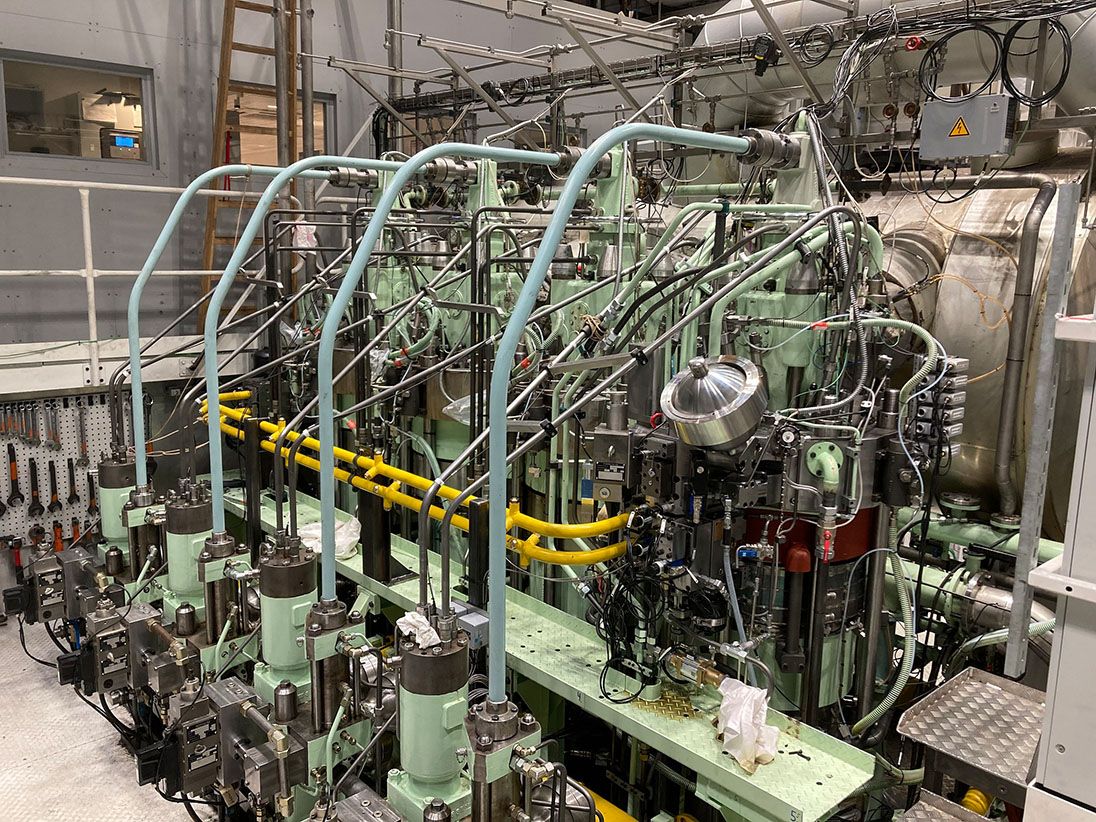MAN Energy Installs 7S60ME Ammonia Engine on Bulk Carrier
Imabari Shipbuilding will install the B&W 7S60ME ammonia engine connected to a selective catalytic reduction (SCR) system while constructing a 200,000 dwt-class bulk carrier.
A joint venture comprised of K Line, NS United, and the Itochu Corp. will explore the use of a MAN Energy 60-bore ammonia engine in a bulk carrier new build. Imabari Shipbuilding will install an SCR-connected B&W 7S60ME-ammonia engine for the joint venture’s 200,000 dwt-class bulk carrier.
“This project marks another important milestone in our ammonia-engine development and indeed for the maritime industry in general,” said Brian Østergaard Sørensen, Vice President and Head of Research & Development, Two-Stroke at MAN Energy Solutions. “It also confirms that we are on the right track in relation to our dual-fuel ammonia concept where we have gained a great understanding of ammonia’s unique characteristics as a marine fuel via our two-stroke engine testing, which we started in early June 2023. Equally as important, we are confident of how to handle it safely; it is very satisfying to see our hard work beginning to pay off.”
MAN Energy’s ammonia-powered engine is currently under development in Denmark, and this deal represents one of the first projects for the product. MITSUI E&S will assemble the ammonia engine in Japan.
7S60ME-ammonia engine; Image Credits: MAN Energy Solutions

“MAN Energy Solutions has developed this engine since 2019 with over 100,000 man-hours recorded in that time. This first MAN B&W ammonia engine is a 60-bore type, which is applicable to a broad range of vessel segments,” said Thomas S. Hansen, Head of Sales and Promotion, MAN Energy Solutions. “We believe that the success of ammonia as a marine fuel strongly relies on a safe introduction to the market. We will therefore monitor a number of engines entering operation at sea to ensure that the engine design and functionality of the auxiliary systems meet our expectations before the engine is formally introduced to our marine-engine program as part of a full sales release.”
In March 2024, MAN and Svitzer signed a memorandum of understanding to focus on the development of a methanol version of the 175D engine—the 175DF-M—and finalize the field-test agreement in which the engine and plant equipment will be installed on a new build tug constructed by Svitzer.
The design is a high-speed engine capable of operating on methanol fuel and will be available in new build or retrofit configuration. It is a product focused on maritime propulsion, equipped with dual-fuel port fuel injection (PFI) technology that is currently undergoing development and validation on two- and four-stroke engines.
“Based on numerous exchanges with customers, we came to the conclusion that the dual-fuel principle, reliability, efficiency, a high methanol share, competitive life-cycle costs and maximum achievable output were key requirements for the 175DF-M’s development. Therefore, after conscientious investigation and consideration, we settled upon the PFI combustion technology as the most favorable,” said Florian Keiler, Head of High Speed, MAN Energy Solutions. “Fundamental combustion development will start in 2024, leading up to a first field-test of the methanol engine in 2026. The MAN 175DF-M engine will subsequently be ready for sales release at the end of 2026.”
MAN Energy’s Cluster 5 Double Layer SCR catalytic converter was recently ordered by MITSUI E&S and was shipped from Dailan, China to Tamano, Japan. It is the company’s largest SCR unit built to date with a diameter of 3,900 mm and a total weight of 28 metric tons and will be ready for series production soon. As an exhaust gas after-treatment system, the Cluster 5 Double Layer can potentially reduce NOx emissions by 90%.
MAN Energy’s SCR control systems are directly integrated into the engine-control system and adjusted to the fuel-injection system and turbocharger. Control-system integration improves the efficiency and reliability of the connected system. Upon integration of the SCR and optimized control strategies, fuel-oil consumption can be saved by up to 2.5 g/kWh. The component is also IMO Tier III compliant and increases efficiency for urea consumption.